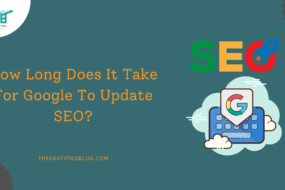
Many businesses need help to gain visibility, grappling with the challenges of algorithms, keywords, and fierce online competition. You might wonder, ‘What should be the first step of a structured SEO plan? It can be a rollercoaster of multiple failures, significantly after you’ve invested heavily in paid media to boost your visibility.
That’s where a structured SEO plan comes to the rescue.
In this article, I’ll explain what a structured SEO plan is, what should be the first step of a structured SEO plan, and how you can create yours.
What Is A Structured SEO Plan?
A structured SEO plan is a meticulously devised roadmap to optimize a website’s online visibility and search engine rankings. It is a strategic framework for systematically improving a website’s performance in organic search results.
This plan typically encompasses several key components, including meticulous keyword research, comprehensive site audits, competitive analysis, and targeted audience profiling. By prioritizing these aspects, businesses can set clear objectives and create actionable steps to achieve them. But what should be the first step of a structured SEO plan that forms the foundation for these components?

Benefits Of A Structured SEO Plan
A Structured SEO plan is crucial to your SEO success, and It starts with understanding what should be the first step of a structured SEO plan to achieve these benefits. Here’s why
Improved User Experience
Focusing on SEO naturally leads to enhancements in user experience. Streamlined navigation, faster page loading times, and mobile responsiveness contribute to a website that attracts visitors and keeps them engaged and satisfied. A positive user experience is crucial for retaining and converting potential customers.
Competitive Edge
Structured SEO allows businesses to stay ahead of competitors by analyzing their strategies and identifying opportunities to outperform them. This competitive advantage is significant in crowded online markets, where being at the forefront of search results can significantly impact visibility and customer trust.
Cost-Effective Marketing
Organic traffic generated through a well-executed SEO plan is a cost-effective alternative to paid advertising. Businesses can achieve sustainable, long-term results by reducing reliance on expensive ads. This saves on marketing costs and establishes a consistent and reliable traffic source over time.
Better Conversion Rates
A structured SEO plan ensures that your content aligns with user intent, attracting more visitors and converting them into customers effectively. By addressing your target audience’s specific needs and interests, your website becomes more adept at turning visitors into valuable leads or sales. This focus on user intent leads to higher conversion rates, maximizing the impact of your online presence.
What Should Be the First Step of a Structured SEO Plan?
You don’t need to reinvent the wheel to create an effectively structured SEO plan. Follow these detailed steps:
- Define Your SEO Goals
When it comes to SEO, setting clear and measurable objectives is paramount. Your goals serve as the guiding stars for your entire SEO strategy. You should be specific, quantifiable, achievable, relevant, and time-bound (SMART). They give your SEO endeavors a sense of purpose and direction, empowering you to opt for tasks carefully and use resources productively. What should be the first step of a structured SEO plan? It’s defining your SMART goals.
For instance, you can enhance your website’s organic traffic every month by 30% in the subsequent six months. Such intentions give your SEO endeavors a sense of purpose and direction, empowering you to opt for tasks carefully and use resources productively. They also serve as a benchmark for measuring success and making data-driven decisions throughout your SEO journey.
- Conduct Keyword Research
Keyword research is the cornerstone of SEO success. For successful keyword research, begin to brainstorm a list of words applicable to your business regarding services, products, or information.
Refine the list by considering your target market’s keywords when searching for these items.
Then, utilize keyword research tools like Google Keyword Planner, SEMrush, or Ahrefs to expand your list and gather essential data on search volume, keyword difficulty, and related keywords. Prioritizing keywords based on relevance, search volume, and competition ensures you focus on those most likely to drive valuable organic traffic to your website.
- Competitor Analysis
Competitor analysis is a crucial step in creating a structured SEO plan. By examining what your competitors are doing in the digital space, you can uncover valuable insights and identify opportunities to outperform them.
Begin by identifying your main competitors in your industry or niche. Once you have a list, use tools like Ahrefs or Moz to dive deeper into their strategies. Analyze their backlinks to discover potential link-building opportunities.
Explore their top-performing keywords to understand what’s driving their organic traffic. Moreover, they should study their content strategies and assess their strengths and weaknesses. This thorough analysis will inform your SEO strategy and help you differentiate your website in the digital landscape.
- Understanding Your Audience
To create content that resonates with your target audience, you must first understand who they are, what they need, and how they behave online. Developing detailed buyer personas is the key to achieving this understanding. Buyer personas are semi-fictional representations of your ideal customers.
For instance, if you’re in the fitness equipment industry, you might create a persona like “Fitness Enthusiast Emma,” who seeks effective home workout solutions. To craft effective buyer personas:
- Gather data from your existing customer base and website analytics to identify common traits and behaviors.
- Research your audience’s pain points, interests, and online behavior through surveys or social media insights.
- Segment your audience into distinct personas, each with unique needs and preferences.
Once you’ve developed these personas, you can tailor your content, keywords, and marketing efforts to speak directly to the individuals you want to attract.
- Technical SEO Audit
Before optimizing your website for search engines, ensure it’s technically sound and accessible. Conducting a comprehensive technical SEO audit is the first step.
Technical issues like slow page loading times, broken links, or mobile-unfriendliness can significantly impact your website’s performance in search engine rankings. To perform a technical SEO audit:
- Utilize tools like Google’s PageSpeed Insights to assess your page loading speed and mobile-friendliness.
- Conduct a thorough website audit using tools like Screaming Frog SEO Spider, which can uncover broken links, duplicate content, and missing meta tags.
- On-Page Optimization
On-page optimization involves fine-tuning individual web pages to rank higher in search engine results pages (SERPs). It includes optimizing titles, headings, and content to align with your target keywords. Here’s how to do it effectively:
- Start by strategically placing your target keywords in critical elements such as page titles, headings, and meta descriptions.
- Ensure your content is comprehensive, informative, and valuable to your audience.
- Use SEO plugins like Yoast SEO or Rank Math if you use WordPress to guide your on-page optimization efforts. These tools offer helpful suggestions and real-time feedback as you create and edit content.
- Content Strategy Development
Having your content fit in with your SEO goals is essential to success. Your content should address the needs and desires of those you intend to reach. Crafting an effective content plan is vital for achieving positive outcomes in terms of SEO. To develop a robust content strategy:
- Begin by identifying the topics and themes relevant to your industry and aligning them with your keywords.
- Create a content calendar to plan and schedule your content production.
- Consider different forms of content, such as blogs, videos, infographics, and podcasts, to reach a broad public.
A practical approach to the tourism industry could be creating thorough travel guides for popular destinations. A comprehensive content plan not only helps your content rank high in search engine results but also appeals to and captures the attention of your desired customers.
- Link Building
Building a strong backlink profile is a fundamental aspect of SEO. High-quality backlinks from authoritative websites boost your website’s credibility and authority in the eyes of search engines. To effectively build backlinks:
- Identify websites in your industry or niche open to guest contributions or partnerships.
- Develop valuable, informative, and shareable content to which these websites want to link.
- Use outreach tools like BuzzStream to manage your outreach campaigns, track responses, and build relationships with potential link partners.
A well-executed link-building strategy can significantly enhance your website’s SEO and improve its rankings in search results.
- Monitoring and Analytics
Regularly monitoring and analyzing your SEO efforts is crucial for making data-driven decisions and measuring your progress. Using tools like Google Analytics and Google Search Console:
- Monitor key metrics such as organic traffic, keyword rankings, and conversion rates.
- Analyze data to identify trends, successes, and areas for improvement.
This ongoing analysis helps you stay on top of your SEO performance and make necessary adjustments to your strategy as you go.
- Continuous Optimization
SEO is an ever-evolving field, and staying competitive requires continuous optimization. Stay informed about changes in search engine algorithms and industry trends. Also, continuously optimize your content, keywords, and website structure to maintain and improve your search rankings.
FAQs
Q1: How does keyword research fit into the first step of an SEO plan?
A: Keyword research is integral to understanding how your target audience searches online. It helps identify relevant keywords and phrases, shaping the content strategy for improved search engine visibility.
Q2: Should competitor analysis be part of the initial SEO planning stage?
A: Yes, competitor analysis is crucial. Studying competitors’ strategies reveals opportunities and gaps in the market, allowing you to position your site more effectively and gain a competitive edge.
Conclusion
A structured SEO plan is like a roadmap for success in the online world. It’s a clear path that helps your website get noticed by search engines like Google. With this plan, your website can stay aware of the vast internet. Remember, what should be the first step of a structured SEO plan is the foundation for this success.
You can start by setting clear goals, finding the right keywords, understanding your competitors, and speaking the language of your target audience. Conduct regular technical audits and on-page optimization while investing in content and link building.








No Comments